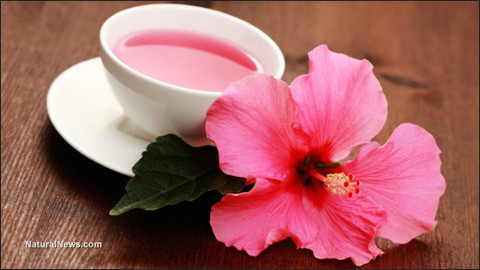Hibiscus tea helps lower cholesterol and blood pressure
Hibiscus flowers contain antioxidants, which help fight free radicals and prevent cell damage.
Hibiscus is a herb with many uses, usually grown in tropical regions. The uses of this herb were first discovered in Angola, along with its pleasant flavor, it has become very popular in North African countries, the Middle East and even in Europe. This is also a very popular herb in our country.
 |
Although the dried leaves of hibiscus are commonly eaten as a vegetable by the natives of India, in other parts of the world, hibiscus is used as a tea. In fact, most teas contain hibiscus. Many researchers believe that the bioflavonoids (an antioxidant), vitamin C, and other minerals in hibiscus flowers can fight free radicals, preventing cell damage from oxidation. Hibiscus tea has cholesterol-controlling properties, and most importantly, it can help lower blood pressure.
The Journal of Nutrition (USA) in 2010 reported a study on blood pressure control features for people with high blood pressure or mild hypertension between the ages of 30-70 years old. The results showed that people who drank 3 cups of hibiscus tea/day had better results than those who did not drink this tea. People with high blood pressure at the beginning of the study, after drinking tea, had a significant reduction in blood pressure.
In 2009, a group of experts from Chung San Medical University (Taiwan) discovered that hibiscus flowers have the effect of limiting cholesterol levels in the blood and reducing the risk of rheumatic heart disease. In a study conducted on hibiscus flower extract, scientists discovered that this extract significantly lowers blood cholesterol levels, effectively prevents lipoprotein oxidation, and protects the artery walls. Scientists also said that the medicinal effects of hibiscus flowers are further enhanced if combined with red wine and tea to reduce cholesterol and lipid levels in the blood.
Scientists also made comparisons between hibiscus tea and black tea. The results showed that after 1 month of using hibiscus tea, the patients' LDL cholesterol and HDL cholesterol levels returned to normal; while black tea only had a positive effect on HDL cholesterol.
How to make hibiscus tea:Hibiscus tea can be made with fresh or dried hibiscus flowers and can be drunk hot or cold.
- Pour 1 cup of boiling water over 2-4 tablespoons of dried hibiscus petals
- Cover and soak for 10-15 minutes.
- Filter the water
- Add a little honey, lemon juice, or citrus peel to enhance the delicious flavor of hibiscus tea.
Or:
- Soak dried hibiscus flowers in water for 2 days (no boiling required)
- Filter to get drinking water./.
According to VOV.online






